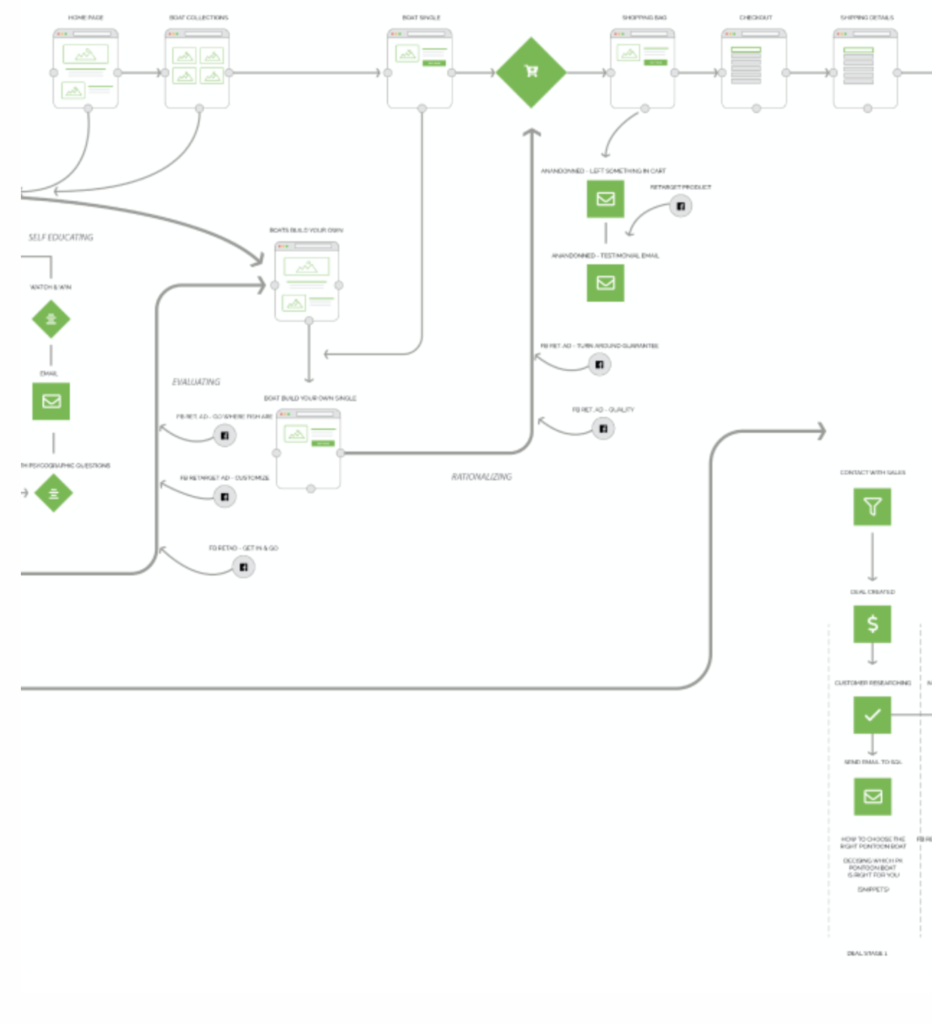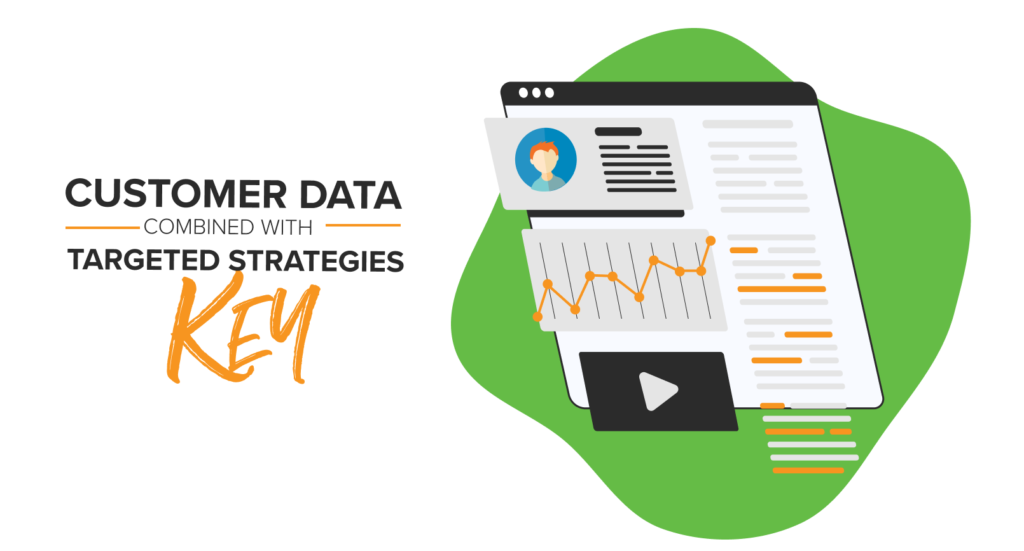How We Personalize the Customer Journey and Map It
Want to drive more traffic to your site and social accounts? Put yourself in the customer’s shoes. Customers are on a journey. From the moment they first learned about you to their first purchase, every step leads to a curated path. As a digital marketer, it’s your responsibility to drive them to your desired conversion path – the customer journey.
Personalizing your brand’s customer journey leads to a great customer experience. Which is why all your created content, ‘everything you send them’ needs to be relevant to their specific needs.
Do this and you’ll see results. Being higher website traffic, better performing emails, and of course more sales with returning customers.
In fact, 96% of organizations believe that email personalization can improve email marketing performance. And the open rate for emails with a personalized message was 18.8%, as compared to 13.1% without any personalization.
What is customer engagement?
According to Google,

This kind of interaction takes place on multiple channels, not just at the point of sale. For example, companies can engage with customers through the following platform.

It’s important to track the customer journey, for this process to be a success.
Here’s our example of a customer journey.

Creating a customer journey ensures that brands are available at the necessary touchpoints where a customer may need to be engaged.
It also helps brands understand who their target audience is and what they need to do to extend one sale into multiple opportunities.
What are the components of a customer journey map?
Next we need to look at what’s happening at each stage. Here’s the framework we like to use:
- Customer personas: A buyer persona is a representation of your target customer based on detailed market research. It includes demographics such as age, gender, job title, etc. Each buyer persona has separate buying behavior. This is why you need to create a different customer journey map for each persona. The persona information you’ve already collected helps you map out a customized journey for that particular buyer persona.
- Funnels: Before mapping out the customer journey you need to figure out the stages your customer goes through to come into contact with your brand. Better known as the marketing funnel which consists of – awareness, consideration, decision, and retention.
- Understanding your customer: You need to understand the goal your customers are trying to achieve at each stage. Collect data through surveys on the website and through emails. Then you can align the information with the customer journey touchpoints.
- Identify touchpoints: Touchpoints are the interactions the customer has with your brand at each customer stage on specific web pages or ads. For example, awareness stage touchpoints are likely to include short-form landing pages, testimonials, your blog, etc.
- Consider your customer’s emotion: The client’s journey is told from the customer’s perspective. So, keeping into consideration which emotion (whether delight or frustration) your customer is likely to feel helps you ensure they will move from one stage to the other.
Then put yourself in their shoes…
Actions: What is the customer doing at each stage? What actions are they taking to move themselves on to the next stage?
Motivations: Why is the customer motivated to keep going to the next stage? What emotions are they feeling? Why do they care?
Questions: What are the uncertainties or other issues preventing the customer from moving to the next stage?
Barriers: What structural, process, cost, implementation, or other barriers stand in the way of moving on to the next stage?

5 tips to be on track for personalizing your content:
1. Take into consideration a customer’s past experience
One effective way to know what your customers want is by checking their history. Look at their previous interactions and transactions with you to find patterns.
For example, you can set up triggers in your email marketing software for customers who frequent a certain product page. Their returns indicate intent to buy, and they may only need a little push to make a purchase. Create a funnel that triggers a personalized email containing offers on the products they visited. It will be automatically sent to them after their, for example, the fifth visit.
Insider tip: If you want to upsell, review their past purchases so that you would have an idea of which related offers are most likely to appeal to them.
2. Extract as much psychographic data as you can
We utilize psychographic data to find a deeper understanding of the customer. Our curated survey extracts information about a person’s values, attitudes, interests, and personality traits that are used to build a profile of how an individual views the world, the things that interest them, and what triggers motivate them to action.
To gain more insight on Heaven’s Trail (a high-end line of tree stand, tools, and installation processes) audience we asked for curated content pertaining to their pain points. For example:
How would you describe your last tree stand installation?
– It was easy.
– It was difficult.
– I leave my stands in the tree so I never have to install them again.
Collecting valuable customer data should start as early as when customers sign up for your emails or follow you on social. Apart from the name and email address, ask for information that will help you know more about them such as location, birthday, interests, industry, and more. Be sure that the amount of information you ask for in your sign-up form must be reasonable. Keep it short and sweet because sign-up can turn off customers.
For existing customers, you can send a survey email or create a survey landing page that aims to extract more information about them. You can motivate them to send a response with incentives such as special offers and discounts.
Insider Tip: Your customer’s IP address can also help you determine location so that you can send location-based offers.
3. Send a personalized note on holidays and their birthday
Customers feel valued when they are remembered on holidays or special occasions like birthdays. Take this as an opportunity to make your bond stronger.
In your email marketing sends, you can automate a birthday message to customers on their special day. Make it more special with a birthday gift such as exclusive discounts they can utilize on their day. Holidays like Thanksgiving, Christmas, and Valentine’s Day are a great way to personalize your content for any type of campaign. Your options are limitless. Just to give them a reason to celebrate.
Insider tip: Make your emails even more personalized by adding their first name in your subject line.
4. Create funnels based on customer behavior
Now the customer knows who you are and what solution you have to offer. However, they are still considering whether you are the right choice.
The online behavior of customers tells us whether they are ready to buy or are still weighing their options. With advanced marketing software today, it’s now possible for brands to set up triggers to send personalized emails that match their website journey. It also allows you to automatically add customers to a workflow based on how they interact with you so that you can nurture them further.
A common triggered email for eCommerce sites is shopping cart abandonment email. Here, customers get a promotional email containing discounts on the items they abandoned.
For customers who click on your CTA, you can automatically add them to a workflow designed for those who are ready for conversion. On the other hand, lapsed customers who have been disengaged for months can be automatically sent with a series of re-engagement emails.
At the consideration and decision phase, you need to separate yourself from the competition. Make it clear to customers why you have the winning edge over the competition and why they should make a decision in your favor.

5. Testimonials from customers are KEY to knowing what worked
Once the customer passes through the conversion stage, the retention phase begins.
The retention stage is an on-going phase and lasts till the customer decides they no longer wish to remain your ‘customer’. The primary touchpoints used in the retention stage are your support landing page, product page, email and blog. Reaching out to customers to ask how they are doing is part of their journey. Customers feel that their voice matters when you take time to listen.
Using survey landing pages and emails, ask how their experience was with you. Use this opportunity to know which aspect of your brand needs improvement. You can also ask them if they find your business recommendable to their friends and colleagues. Keeping an open relationship with your customers is healthy for your brand and for their journey.
There is no single right way to create a customer journey, and your own brand will need to find what works best for your particular situation.The framework and tips provided above should give you a good head-start at better understanding the journey that your customers travel through as they engage with your brand, products, and people.
With the right amount and usage of customer data combined with targeted strategies, you can pull it off like a digital marketing pro.
